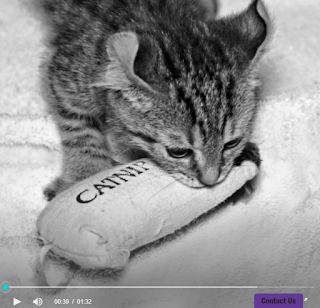My Dog and Chocolate: Some Preventative Ideas
Like us, some
dogs seem to be irresistibly drawn to chocolate. If Fido finds a stray candy
bar or noses his way into the chocolate chips in the pantry, he can’t seem to
help consuming as much of that chocolaty goodness as possible. However, unlike
our chocolate binges, which might result in a guilt trip or a renewed dieting
plan, a dog’s chocolate binges can end up in the pet ER.
Dog Proofing and Protection
We can do a lot to keep our pets from consuming chocolate. Dog-proof your kitchen by storing chocolate chips and other ingredients in sealed containers and keeping them on high shelves. Practice extra-awareness when you have chocolate treats out on the counters and tables. Something as simple as placing the brownies at the center of the table instead of on the edge can make a difference. Store the chocolate cake or other chocolate goods in the refrigerator instead of on the counter where they could be more accessible. Remind visitors that your pet should not have chocolate, especially if your pet has a penchant for begging for food from unsuspecting guests. In the end, the best insurance is to have someone around who can check on your dog. If you are at home throughout the day, you can be aware of what your pet is getting into. If you are not able to supervise your pet regularly, make sure he doesn’t have free reign in an area where chocolate (or other hazards) are readily available. Finally, if you have a pet sitter who visits during the day, show them around your house so they can also be aware of where the hazards are. If they find Fido in the kitchen looking guilty, they’ll be able to pinpoint the problem faster if they know what was in the ransacked cupboard.
Holidays
Remember that chocolate abounds around the holidays, and these days, chocolate-celebrated holidays come around just about every month. From Halloween to New Years there seems to be chocolate everywhere. Easter is also a hot time for chocolate consumption, for humans and animals alike, since there’s a higher likelihood of your pet coming across a candy egg in the neighborhood. Do your best to pinpoint chocolate and put it out of the reach of your pets. This could mean some present sniffing and shaking for any packages you receive from friends and family. If something could be food, its best to put it high up and out of reach. If you have small children with Halloween stashes, for their sake and your dog’s, ask your kiddos to put their candy out of Fido’s reach. No one wants a kid with a pillaged Halloween stash and a dog with a serious chocolate and candy wrapper condition.
Sources of Chocolate
As mentioned above, your house will probably see an influx of chocolate around the holidays. Sweets like chocolate bunnies or chocolate hearts pose one type of threat since they also come in plastic, cardboard, or foil packages, all of which your dog might ingest. Halloween candy can also fit under this category. Another common source of chocolate is baking and food ingredients: chocolate chips, baking chocolate (normally sold in large blocks), cocoa powder, chocolate liqueur, etc. Finally, an unusual source of chocolate or chocolate products is cocoa shell-based mulches in landscaping. This type of mulch may be popular in your area (after all, who doesn’t want a yard that smells like chocolate?), so be prepared for the possibility of encountering it on your walks. While your dog probably won’t be too inclined to eat mulch, it’s best to be aware. If you are doing landscaping of your own, you may find pet-friendly cocoa bean shell mulch in your store. Most likely this mulch has been treated to remove or neutralize the chemical theobromine, which is the caffeine-like chemical in chocolate that is harmful to your dog. Or you could always opt for a non-cocoa bean mulch.
Planning
While you hope that it will never happen, it’s always best to plan for the worst. Despite all your best efforts, sometimes your pet will still find his way to an alluring piece of chocolate. If this happens, it is always best to plan ahead and have all the information you need to get your pet set with timely an appropriate treatment. Read the next post “My Dog Ate Chocolate. Now What Do I Do?” to learn more about how to respond in a chocolate poisoning situation.
Dog Proofing and Protection
We can do a lot to keep our pets from consuming chocolate. Dog-proof your kitchen by storing chocolate chips and other ingredients in sealed containers and keeping them on high shelves. Practice extra-awareness when you have chocolate treats out on the counters and tables. Something as simple as placing the brownies at the center of the table instead of on the edge can make a difference. Store the chocolate cake or other chocolate goods in the refrigerator instead of on the counter where they could be more accessible. Remind visitors that your pet should not have chocolate, especially if your pet has a penchant for begging for food from unsuspecting guests. In the end, the best insurance is to have someone around who can check on your dog. If you are at home throughout the day, you can be aware of what your pet is getting into. If you are not able to supervise your pet regularly, make sure he doesn’t have free reign in an area where chocolate (or other hazards) are readily available. Finally, if you have a pet sitter who visits during the day, show them around your house so they can also be aware of where the hazards are. If they find Fido in the kitchen looking guilty, they’ll be able to pinpoint the problem faster if they know what was in the ransacked cupboard.
Holidays
Remember that chocolate abounds around the holidays, and these days, chocolate-celebrated holidays come around just about every month. From Halloween to New Years there seems to be chocolate everywhere. Easter is also a hot time for chocolate consumption, for humans and animals alike, since there’s a higher likelihood of your pet coming across a candy egg in the neighborhood. Do your best to pinpoint chocolate and put it out of the reach of your pets. This could mean some present sniffing and shaking for any packages you receive from friends and family. If something could be food, its best to put it high up and out of reach. If you have small children with Halloween stashes, for their sake and your dog’s, ask your kiddos to put their candy out of Fido’s reach. No one wants a kid with a pillaged Halloween stash and a dog with a serious chocolate and candy wrapper condition.
Sources of Chocolate
As mentioned above, your house will probably see an influx of chocolate around the holidays. Sweets like chocolate bunnies or chocolate hearts pose one type of threat since they also come in plastic, cardboard, or foil packages, all of which your dog might ingest. Halloween candy can also fit under this category. Another common source of chocolate is baking and food ingredients: chocolate chips, baking chocolate (normally sold in large blocks), cocoa powder, chocolate liqueur, etc. Finally, an unusual source of chocolate or chocolate products is cocoa shell-based mulches in landscaping. This type of mulch may be popular in your area (after all, who doesn’t want a yard that smells like chocolate?), so be prepared for the possibility of encountering it on your walks. While your dog probably won’t be too inclined to eat mulch, it’s best to be aware. If you are doing landscaping of your own, you may find pet-friendly cocoa bean shell mulch in your store. Most likely this mulch has been treated to remove or neutralize the chemical theobromine, which is the caffeine-like chemical in chocolate that is harmful to your dog. Or you could always opt for a non-cocoa bean mulch.
Planning
While you hope that it will never happen, it’s always best to plan for the worst. Despite all your best efforts, sometimes your pet will still find his way to an alluring piece of chocolate. If this happens, it is always best to plan ahead and have all the information you need to get your pet set with timely an appropriate treatment. Read the next post “My Dog Ate Chocolate. Now What Do I Do?” to learn more about how to respond in a chocolate poisoning situation.
See more at - https://www.2pawsupinc.com
Content blog source - https://goo.gl/xvzqGn



Comments
Post a Comment